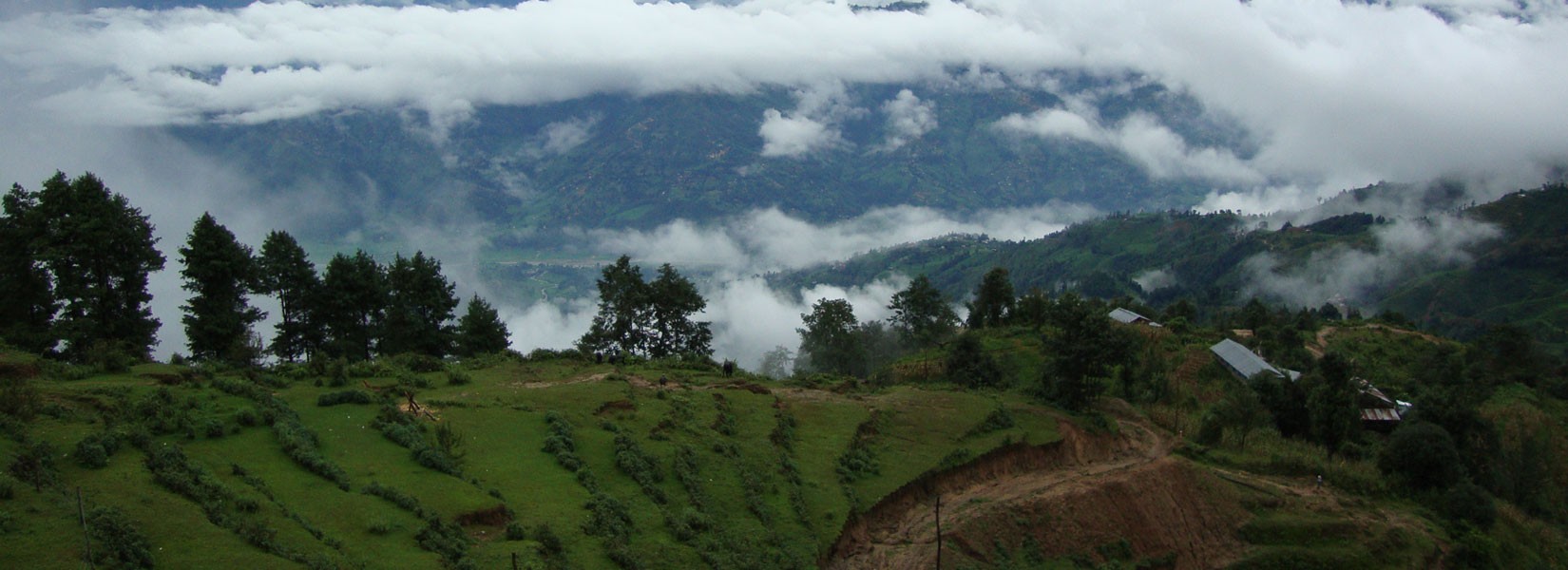There are hiking trails of various lengths in the park with the choice ultimately depending on individual fitness levels. The route detailed here is a full day, 18km ‘moderate’ hike with an altitude gain/loss of just over 1,000m between the starting/finishing point at Budhanilkantha (about 1,600m) and the summit (2,732m).
The first part of the hike is pleasant and uneventful: it consists of a long but gradual ascent along with a combination of shallow stone steps and winding paths through the attractive forest, verdant with ferns and mosses during the monsoon in particular. This is followed by several points of interest clustered together as the summit is approached.
First comes Baghdwar, or the Tiger’s Mouth: the little stream of crystal pure water which gushes out through the mouth of the tiger’s head gargoyle is the de facto source of the Bagmati River which runs through the Kathmandu Valley and divides Kathmandu from Patan. With several Hindu temples along its banks, most famously Pashupatinath, the river is revered by Hindus and Buddhists alike.
Just beyond Baghdwar is the small but atmospheric Baghdwar Gompa. Much less celebrated than the larger Nagi Gompa, the former Tamang monastery elsewhere on the mountain, it is nevertheless an atmospheric and spiritual place. If a monk is in the vicinity, he will be happy to allow visitors to look inside.
Alongside the gompa is the simple kuti of the well-known local ascetic, Baba Todke. However, in order to put this in context, it is better first to mentally jump ahead to the summit clearing a little further along the trail (2,732m). With its views over the Kathmandu metropolis to the mountains beyond, this is the site of the monument to Shivapuri Baba, who was reputedly born in 1,826 in Kerala, India, and died near Pashupatinath, Kathmandu, in 1,963 at the highly disputed age of 136. A Hindu saint and mystic also knew as Govindananda Bharati as well as ‘Malayali Magellan’ for having traveled around the world, mainly on foot, Shivapuri Baba practiced and taught the ancient way of living or swadharma and spent the last 30 years of his life on the mountain. His simple monument records his ‘Right Life’, although the inscription is rather confusing: ‘devotion—discrimination—physical—moral and spiritual—disciplines.’
It was awareness of Shivapuri Baba which attracted Baba Todke to Shivapuri. Also born in India, Baba Todke, 58 years old at the time of writing, journeyed to Nepal and initially settled at Pashupatinath. However, finding himself at odds with the milieu there, he gravitated towards Shivapuri in the early 1990s and spent five years meditating in the bole of a tree, now preserved under a protective canopy, just beyond his small kuti. Baba Todke was gradually accepted by the local villagers who help to support him with food and produce. Casual visitors are welcome to his kuti where they may be lucky enough to be served by the Baba with masala tea made with fresh milk. Framed by a flowing beard and greying, unkempt hair, Baba’s face is both kindly and austere, with eyes which seem to see into your soul if they catch your gaze. As a sign of respect, visitors normally leave a little money with Baba Todke to assist him in the pursuit of his highly ascetic and frugal lifestyle
The final ‘special spot’ before the long descent back to Budhanilkantha is the so-called Holy Rock, the only rocky outcrop to be encountered on the trail. It is a favorite meditation place for local people and care should be taken both not to disturb them and to keep away from the edge: there are sheer drops beyond! This results in the feeling of having been transported into heaven on days when the Holy Rock soars above the clouds!
Challenge yourself to follow a Shivapuri trail and you will end up feeling physically tired but mentally refreshed!




